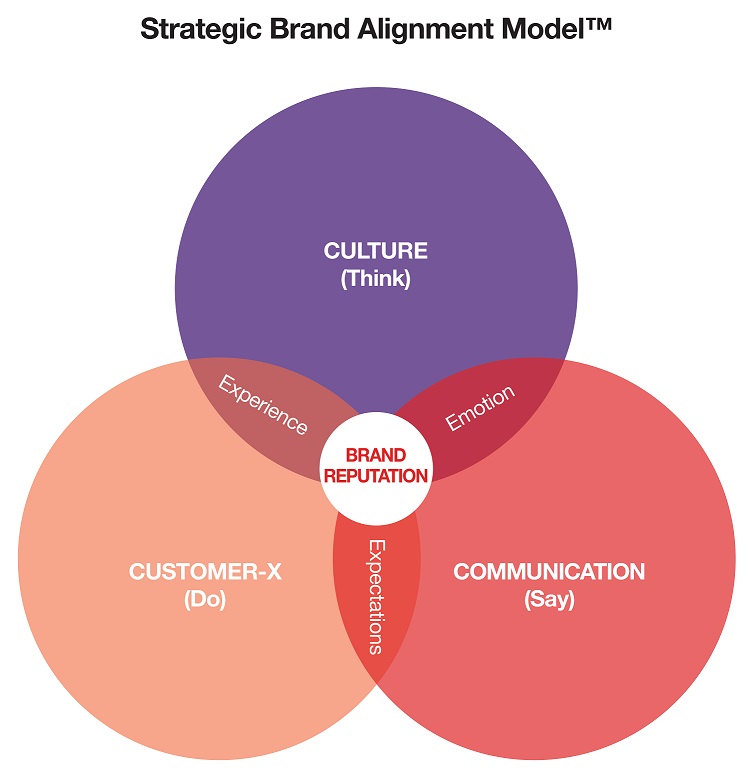Everything works and flows better when things are aligned.
In life, for instance, you feel more comfortable when you speak and act in alignment with your beliefs and values, your body works better when your posture is in alignment and the stars are said to align when preparation meets opportunity.
It’s the same for businesses. Results, relationships and reputations are enhanced when there is alignment between a brand’s purpose, principles and promise.
In a practical sense, this means that both employees and customers alike, clearly understand why the brand exists, what it stands for and the difference it makes, and the brand reliably and consistently delivers on this commitment.
However, one of the biggest problems faced by businesses and government organisations today is a lack of brand alignment between this identity, corporate messaging and the customer experience.
The importance of brand alignment
A misaligned brand causes myriad problems, such as:
- a task-focused and silo-based workforce rather than a purpose-driven and values-based workforce
- mixed messaging from employees
- inconsistent brand voice across marketing platforms
- unreliable and inconsistent customer experiences
- lower customer satisfaction from unmet expectations
- fragmented reputation.
On the other hand, a well-aligned brand brings myriad benefits, such as:
- increased employee engagement because staff understand how their work fits into the bigger picture and makes a difference
- greater ability to attract staff and customers due to better targeted and resonant brand messaging
- greater customer loyalty from a more recognisable and reliable experience
- strengthened industry positioning from a highly distinguishable brand
- improved sales results with sales teams speaking in a unified way
- consistent brand touchpoints
- cohesive reputation.
How to build an aligned brand
Brand alignment is built when individuals, teams and organisations are clear and consistent in what they think (intentions), say (messages) and do (actions) in delivering on the brand promise.
The Strategic Brand Alignment Method™ shown in the below model provides an approach for aligning organisational thinking, saying and doing by integrating the three brand-defining dimensions of corporate culture, communications and customer experience.

©Ros Weadman
Culture reflects what an organisation thinks – expressed through its beliefs, values and sense of purpose.
Communications reflect what an organisation says – expressed through the brand identity, imagery, stories and messages it conveys to the outside world.
Customer experience reflects what an organisation does – expressed through direct delivery of its products and services, and interactions via customer touchpoints and marketing channels.
When culture, communications and customer experience are aligned – that is, when organisational beliefs, values and a strong sense of purpose (CULTURE) are embedded within marketing messages and channels (COMMUNICATIONS), and then faithfully delivered upon through the product/service (CUSTOMER EXPERIENCE) – credibility and trust are built from the consistency of thoughts, words and actions.
Over time, this brand alignment will enhance your business results, relationships and reputation.
©Ros Weadman 2024
^^^^^^^^^^^^^^^^^^^^^^^^^^^^^^^^^^
If you’d like to enhance your business results, relationships and reputation by strategically aligning your company culture, communications and customer experience, get in touch with Ros Weadman.



